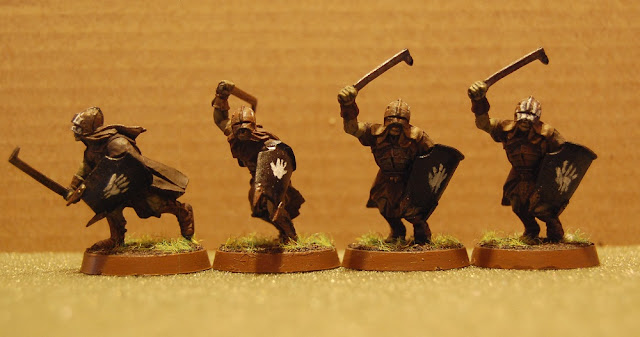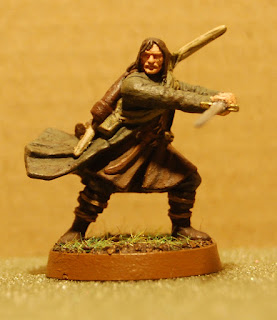A few weeks ago, I had the opportunity to try out an RPG called Dungeon Crawl Classics- for those of you who don't know what the game is, it's a D&D-based RPG which seeks to capture (quite successfully, in my opinion) the spirit and 'feel' of the fantasy stories that inspired the original edition of D&D- authors like Howard, Lovecraft, Vance, and Moorcock (for a full list, try searching on D&D appendix N). This particular branch of fantasy happens to be one of my favorites, second only to Tolkien, and so DCC is proving an excellent fit with my tastes. I'll try and get a full review of DCC up once I've gotten another game or two under my belt, but, in the mean time, I'll talk a bit about a connected magazine-
Tales From the Magician's Skull.
I'll preface this with a short disclaimer- like I've mentioned on here before, I don't tend to read a lot of really recent fantasy- it's not because I dislike what's currently published, it's simply that my particular tastes tend to lead me to older authors- like those which inspired DCC- so I'll be comparing Magician's Skull to these authors, rather than to its contemporaries. This shouldn't be a problem, however, as the magazine intentionally harks back to this era anyway.
It's a fantasy fiction magazine after the general fashion of Weird Tales, published by the same company (Goodman Games) as DCC and has a definite link to the game- stats for everything that appears in the stories are in the back- but it can certainly be read without having any knowledge of DCC- or even RPGs. The printing and binding are high-quality, more like a slim paperback than a standard magazine. I especially appreciated the heavy, almost parchment-like paper- very unlike the pulp magazines! My one issue (and this is fairly minor) is the use of a thin, laminated plastic over the cover- while this makes it look great when new, once the magazine starts taking some wear the laminate begins to peel at the corners (as it has on mine), and can be very difficult to deal with.
The art is also high-quality, in the style of early D&D art- this is something of a trademark with DCC, and one I like. Each story has a full-page illustration proceeding it, and map-like illustrations for some major locations. This last, I would imagine, is primarily to aid those (like myself) who may try and run the stories as an RPG module, although it is also a help to the mere reader as well.
There are seven stories- all by different authors and in a variety of different styles, although all harking back (more or less) in substance to the 'swords and sorcery' fantasy published in the first half of the 20th century.
The influence of RPGs is also strong in these- the first story, "What Lies in Ice", is especially easily transferable to a adventure format and all, to a greater or lesser extent, draw on the lore of D&D. Perhaps my favorite part of early fantasy is its often startling originality and creativity- while none of these authors extend to the ranks of a Howard or Moorcock in creating these strange scenes and creatures, there are still some glimmerings of the same ability here- like the Kraken's "chapel" in "What Lies in Ice", or the assault of the guai on Long-He in "Beneath the Bay of Black Waters".
My two favorites from this issue (I won't spoil either) would be "Beneath the Bay of Black Waters" and "There was an Old, Fat Spider"- the first of these features an Imperial commissioner taking down a drug gang with very interesting allies in a Chinese inspired setting, the latter has a nicely portrayed relationship between a vengeful woodcutter and an aged giant spider.
There are also directories of fantasy discussion groups and bookstores from all over the US- I appreciated this addition, as I'm always on the lookout for more used bookstores!
All in all, Tales from the Magician's Skull proved a very enjoyable read- I look forward to reading more issues soon.
























































